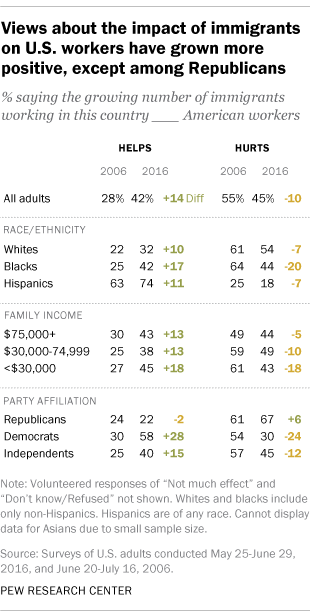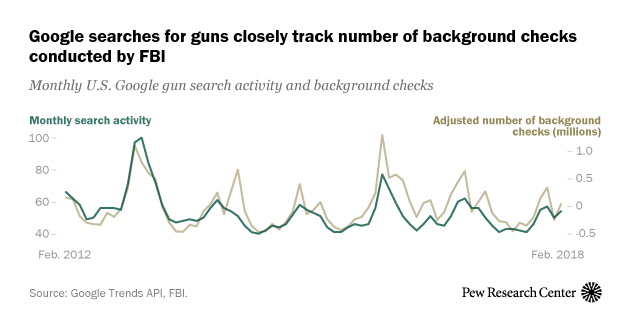 Emerging technologies that draw from biomedical technology, nanotechnology, information technology and other fields may lead to any number of ways people might be able to “upgrade” themselves. But a majority of Americans greet the possibility of these bre
Emerging technologies that draw from biomedical technology, nanotechnology, information technology and other fields may lead to any number of ways people might be able to “upgrade” themselves. But a majority of Americans greet the possibility of these bre- 29394Murphy2025-03-20
 As the 15th anniversary of 9/11 approaches, partisan differences over the ability of terrorists to launch a major attack on the United States are now as wide as at any point dating back to 2002.
As the 15th anniversary of 9/11 approaches, partisan differences over the ability of terrorists to launch a major attack on the United States are now as wide as at any point dating back to 2002.- 28874Murphy2025-03-20
 Facebook usage and engagement is on the rise, while adoption of other social networking platforms holds steady.
Facebook usage and engagement is on the rise, while adoption of other social networking platforms holds steady.- 25033Murphy2025-03-20
 After the June 2013 leaks by Edward Snowden about NSA surveillance of Americans’ communications, Pew Research Center began an in-depth exploration of people’s views and behaviors related to privacy. Here's what we learned.
After the June 2013 leaks by Edward Snowden about NSA surveillance of Americans’ communications, Pew Research Center began an in-depth exploration of people’s views and behaviors related to privacy. Here's what we learned.- 29892Murphy2025-03-20
 24% of Americans report earning money from the digital ‘platform economy’ in the past year. The extra income they make is a luxury for some, but a necessity for others.
24% of Americans report earning money from the digital ‘platform economy’ in the past year. The extra income they make is a luxury for some, but a necessity for others.- 22122Murphy2025-03-20
 A majority of U.S. adults (59%) reject the idea of adding interpretation, saying that the news media should present the facts alone
A majority of U.S. adults (59%) reject the idea of adding interpretation, saying that the news media should present the facts alone- 27620Murphy2025-03-20
 Thanks to scientific advancements, brain chip implants are already being tested in individuals to help them cope with an injury or ailment. But when it
Thanks to scientific advancements, brain chip implants are already being tested in individuals to help them cope with an injury or ailment. But when it- 21656Murphy2025-03-20
 Nearly a quarter of Americans say they’ve earned money in the digital “platform economy” in the past year, according to a new Pew Research Center survey. Perhaps surprisingly, though, the most commonly cited motivation for these workers is not the pay.
Nearly a quarter of Americans say they’ve earned money in the digital “platform economy” in the past year, according to a new Pew Research Center survey. Perhaps surprisingly, though, the most commonly cited motivation for these workers is not the pay.- 29473Murphy2025-03-20
 Many Americans rely on cell phone internet access due to a lack of broadband at home. But are these devices a good substitute?
Many Americans rely on cell phone internet access due to a lack of broadband at home. But are these devices a good substitute?- 25870Murphy2025-03-20
 Nearly nine-in-ten voters who followed the 2016 returns (88%) did so on TV, while 48% used online platforms; 21% used social networks such as Twitter and Facebook.
Nearly nine-in-ten voters who followed the 2016 returns (88%) did so on TV, while 48% used online platforms; 21% used social networks such as Twitter and Facebook.- 22352Murphy2025-03-20
 When asked whether one prefers to read, watch or listen to their news, younger adults are far more likely than older adults to opt for text – and most of that reading is occurring on the web.
When asked whether one prefers to read, watch or listen to their news, younger adults are far more likely than older adults to opt for text – and most of that reading is occurring on the web.- 28911Murphy2025-03-20
 Despite the technological potential to help humans live longer and stronger, many U.S. adults are not ready to embrace these possibilities.
Despite the technological potential to help humans live longer and stronger, many U.S. adults are not ready to embrace these possibilities.- 27879Murphy2025-03-20
 Differing views on benefits and risks of organic foods and GMOs as Americans report higher priority for healthy eating
Differing views on benefits and risks of organic foods and GMOs as Americans report higher priority for healthy eating- 21765Murphy2025-03-20
 As the U.S. work environment continues to shift, the public is adapting to the new realities of the workplace and rethinking the skills they need to compete.
As the U.S. work environment continues to shift, the public is adapting to the new realities of the workplace and rethinking the skills they need to compete.- 23145Murphy2025-03-20
 Americans’ views about the impact the growing number of immigrants working in the U.S. is having on American workers have softened notably over the past decade.
Americans’ views about the impact the growing number of immigrants working in the U.S. is having on American workers have softened notably over the past decade.- 21281Murphy2025-03-20
 Much of U.S. job growth over the past 25 years has been in occupations that require higher levels of education, training and experience – a trend that seems likely to continue, based on our analysis of official government job-growth projections.
Much of U.S. job growth over the past 25 years has been in occupations that require higher levels of education, training and experience – a trend that seems likely to continue, based on our analysis of official government job-growth projections.- 23156Murphy2025-03-20
 Most Americans like their choices in today's information-saturated world. But 20% feel overloaded, and there are stresses for those with fewer pathways to the internet or who feel they are expected to do too much information gathering.
Most Americans like their choices in today's information-saturated world. But 20% feel overloaded, and there are stresses for those with fewer pathways to the internet or who feel they are expected to do too much information gathering.- 28019Murphy2025-03-20
 Digital news continues to evolve, pushed by a variety of recent innovations. Here are 10 key findings that show how these shifts are reshaping Americans’ news habits.
Digital news continues to evolve, pushed by a variety of recent innovations. Here are 10 key findings that show how these shifts are reshaping Americans’ news habits.- 27367Murphy2025-03-20
 Plastic surgery has expanded from treatments aimed mainly at repairing damage to include elective changes like liposuction or tummy tucks. While it’s now a multibillion-dollar industry, just 4% of Americans say they have ever had elective cosmetic surgery
Plastic surgery has expanded from treatments aimed mainly at repairing damage to include elective changes like liposuction or tummy tucks. While it’s now a multibillion-dollar industry, just 4% of Americans say they have ever had elective cosmetic surgery- 22259Murphy2025-03-20
 Many Americans are distrustful of information provided by the food industry on GM foods, and those who are concerned about GM food issues are especially skeptical.
Many Americans are distrustful of information provided by the food industry on GM foods, and those who are concerned about GM food issues are especially skeptical.- 21646Murphy2025-03-20
 Read key findings from an analysis that looks into the public's interest in guns as potential consumer products, rather than as a subject of general interest.
Read key findings from an analysis that looks into the public's interest in guns as potential consumer products, rather than as a subject of general interest. A majority of Americans say they use YouTube and Facebook, while use of Instagram, Snapchat and TikTok is especially common among adults under 30.
A majority of Americans say they use YouTube and Facebook, while use of Instagram, Snapchat and TikTok is especially common among adults under 30.






















